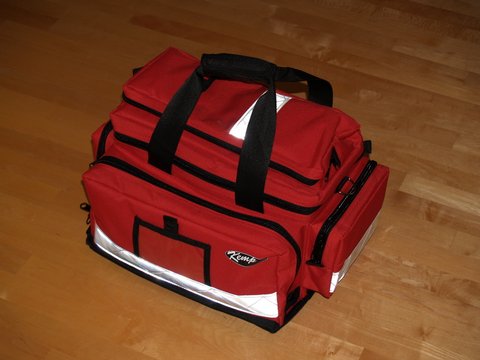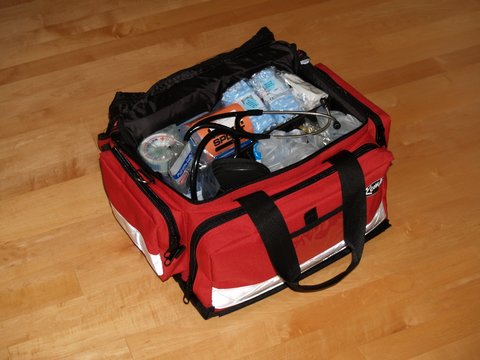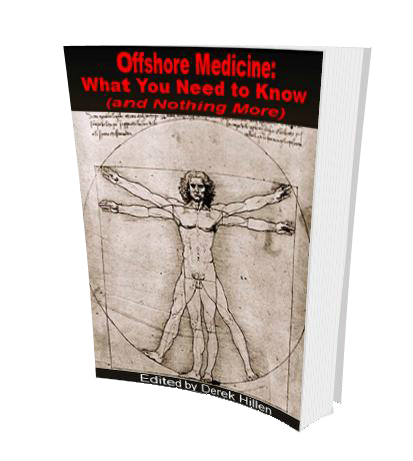- Boat
- Articles
- About
- Tehani-li Logs
- 2004
- Uligan Maldives
- Man, Oh Man, Oman
- Eritrea: The Nicest Place You’ve Never Heard Of
- Cruising Notes: Oman to Eritrea – From Pirates to Cappucinos
- Old Testament Sudan
- Egypt: Legend, Myth and Reality
- Thoughts on Cruising the Red Sea
- Greece: Civilization Again
- Montenegro
- Malta
- Sardinia, Italy
- Barcelona, Spain
- 2003
- 2002
- 2001
- 2004
- Contact
Our Medical Kit

Every boat should have a medical kit and every boat venturing offshore should have a well-stocked and well-thought out medical kit. It has taken me some time to compile ours and while I think it is “good enough” it still isn’t 100% where I want it to be – but then, neither is the boat!
After taking a wilderness medical course that was geared for offshore sailors I felt better prepared to deal with medical emergencies on board. Actually, before taking the course the most medical proficiency I could claim was competence in applying a band-aid. Great strides have been made since and now I have a little more knowledge of the subject. While that may be dangerous I still think it better than my previous complete ignorance!
Our medical kit is designed for a family of four as we have two small children. The thinking behind it is we would also bring this with us into a life raft if we ever met with such a catastrophe (and had the time to do so). I therefore decided a proper EMT bag with reflective tape was the way to go and chose one made by Kemp. They make several different types of EMT bags and this is their larger model. I purchased it – and all medical supplies except for the prescription medications – over the internet. I pretty much found everything on Amazon except the stethoscope and otoscope, which I found on a medical supply website.
I divided up everything into three categories: Tools, Prescription Medication, and Non-Prescription Medication. Here are the gory details:
Tools:
Stethoscope: for listening to lungs, heart and bowels
Otoscope: for peering into ears and engines
Sam Splints (2 large and one small set for fingers)
60 cc Syringes (5)
Soft Toothbrushes (2): for wound cleaning
Cotton balls
Kitchen gloves (2 pairs): for wound cleaning
Surgical Scissors
Kelly Clamps: for wound cleaning
Toothed Tweezers
Gauze Squares (various sizes)
Hydrocolloid Dressings (4″ x 4″)
Xeroform Dressings (2″ x 2″ and 4″ x 4″)
Flex Wrapping Bandage (Vet Wrap) (4″ x 5 yards)
Israeli Battle Bandage
Steri-strips
Hot Water Bottle

Prescriptions:
Epi-Pen (2): for anaphylaxic shock
Prednisone: for extreme allergic reactions
Benzodiazepine (Alprazolam): for acute stress syndrome in the event of injury
Viscous Lidocaine: numbing medication for wounds and wound cleaning
Ceftin: all-purpose strong antibiotic
Zofran: sea sickness (haven’t tried this one yet)
Vicodin: for extreme pain
Non-prescrptions:
Cavit: for tooth repair
Tylenol
Ibuprofen
Bacitracin ointment
Lamisil
Gu Brew: for hypothermia recovery and instant energy
Benadryl
Betadine Povidone Iodine: for wound cleaning
Tincture of Benzoin: for help with dressing adhesion
Aloe Vera Gel: for burns
Rubbing Alcohol
Hydrogen Peroxide (in case of any reaction to iodine)
Electrolyte tablets (for re-hydration)
OTC Cough Medicine
Immodium
Sting-Kill (for insect stings and bites)
I sat down with my primary care physician to get the necessary prescriptions. I had some ideas and, more importantly, he had some suggestions. The above list is what we both thought would be comprehensive enough for offshore cruising.
I will also make 3 x 5 cards for each medicine on board recording usage and dosage: adult and child. These I will laminate and put in the kit as well so we don’t forget how much of what to give. I also have a copy of the ebook I wrote on board which are my notes from my offshore medicine class.
The total cost of the above, including prescriptions, I would guess is just over $1,000. I haven’t added it up accurately but I feel it is cheap insurance. If you have an injury and are in want of any of the above, whatever price you paid you will probably agree was well worth it. Most of the material will last for a long time as well and does not need to be replaced every year. By putting it together myself, I also know intimately what each item is for and how to use it. Buying a pre-assembled kit off the shelf usually means you ignore it until an emergency and then start speed reading the instructions to figure out what to do. I don’t want to be that person.
We will be adding to the kit as appropriate in the future. For now, however, I think this is a pretty good start. Now to work on the ditch bag, my next project.


April 13, 2013
1:34 pm #comment-1
Derek,
Very helpful. We’re cruising with three littles aboard (5, 9, and 10); and I found this very helpful. How are you coming on your ditch kit? I’d love to see that. Are you planning to invest in a manual emergency watermaker? We did on our last cruise, pre-kids, about 12 years ago. But, now I’m looking at these emergency desalination packs and wondering.
Paul
April 14, 2013
12:48 am #comment-2
Paul,
Thanks. I am actually working on my ditch kit right now. I went to Target today to pick up a bunch of small things and have ordered most of the rest. Like you, when I was cruising pre-children I had a handheld PUR watermaker for the ditch bag. I tried it out once and it was extremely difficult to use, impossible unless you are really in shape and no help at all if you are injured. I just ordered the SeaPack passive desalination bags and will add some water to the kit as well.
I think nowadays, vs. 10-20 years ago, with EPIRBs virtually universal and the AMVER vessel assist program, you are highly unlikely in the event of a catastrophe to be bobbing around in a life raft for months on end. Most likely your chances of rescue are within a couple days. Of course, none of us wants to test that theory!
I’ll write a post once I have completed my ditch bag.
Derek